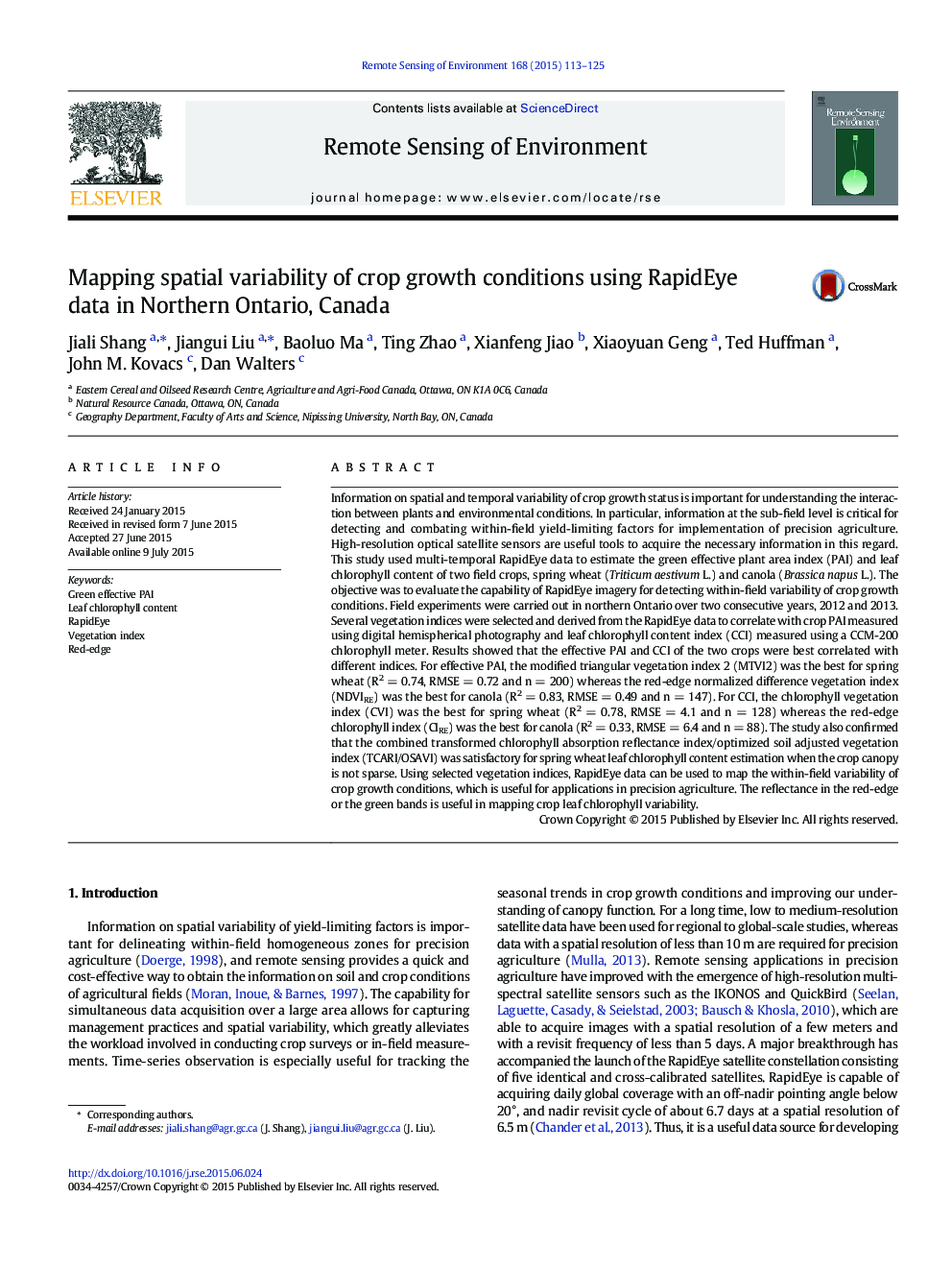| کد مقاله | کد نشریه | سال انتشار | مقاله انگلیسی | نسخه تمام متن |
|---|---|---|---|---|
| 4458810 | 1621232 | 2015 | 13 صفحه PDF | دانلود رایگان |

• Red edge or green bands are advantageous for leaf chlorophyll content estimation.
• Canola flower impacts pigment or LAI estimation from optical remote sensing data.
• LAI of canola and spring wheat have different relationships with vegetation indices.
• TCARI/OSAVI is satisfactory for dense canopy leaf chlorophyll content estimation.
Information on spatial and temporal variability of crop growth status is important for understanding the interaction between plants and environmental conditions. In particular, information at the sub-field level is critical for detecting and combating within-field yield-limiting factors for implementation of precision agriculture. High-resolution optical satellite sensors are useful tools to acquire the necessary information in this regard. This study used multi-temporal RapidEye data to estimate the green effective plant area index (PAI) and leaf chlorophyll content of two field crops, spring wheat (Triticum aestivum L.) and canola (Brassica napus L.). The objective was to evaluate the capability of RapidEye imagery for detecting within-field variability of crop growth conditions. Field experiments were carried out in northern Ontario over two consecutive years, 2012 and 2013. Several vegetation indices were selected and derived from the RapidEye data to correlate with crop PAI measured using digital hemispherical photography and leaf chlorophyll content index (CCI) measured using a CCM-200 chlorophyll meter. Results showed that the effective PAI and CCI of the two crops were best correlated with different indices. For effective PAI, the modified triangular vegetation index 2 (MTVI2) was the best for spring wheat (R2 = 0.74, RMSE = 0.72 and n = 200) whereas the red-edge normalized difference vegetation index (NDVIRE) was the best for canola (R2 = 0.83, RMSE = 0.49 and n = 147). For CCI, the chlorophyll vegetation index (CVI) was the best for spring wheat (R2 = 0.78, RMSE = 4.1 and n = 128) whereas the red-edge chlorophyll index (CIRE) was the best for canola (R2 = 0.33, RMSE = 6.4 and n = 88). The study also confirmed that the combined transformed chlorophyll absorption reflectance index/optimized soil adjusted vegetation index (TCARI/OSAVI) was satisfactory for spring wheat leaf chlorophyll content estimation when the crop canopy is not sparse. Using selected vegetation indices, RapidEye data can be used to map the within-field variability of crop growth conditions, which is useful for applications in precision agriculture. The reflectance in the red-edge or the green bands is useful in mapping crop leaf chlorophyll variability.
Journal: Remote Sensing of Environment - Volume 168, October 2015, Pages 113–125